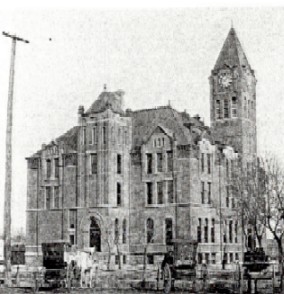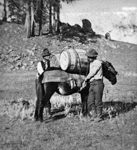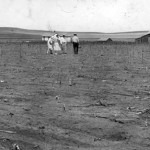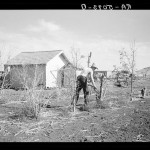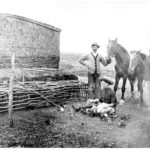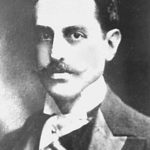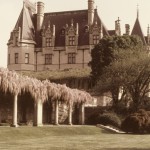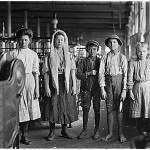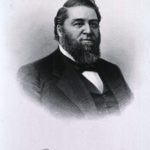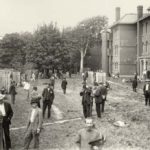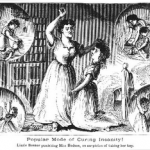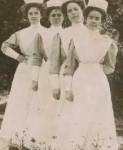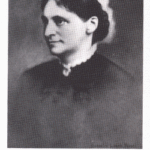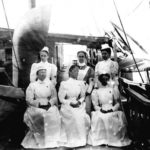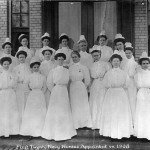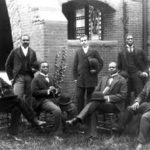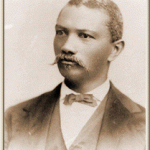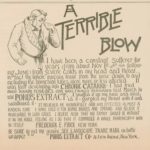Some may wonder how Oscar Gifford, the first superintendent at the Canton Asylum for Insane Indians, could make much of a pitch for the little town to host what might have become quite a large and important facility. South Dakota was a fairly centralized part of the country for the Indian population it sought to help, so the asylum’s location in that state was not so surprising. Continue reading
Category Archives: Canton Asylum for Insane Indians
Settlement in Lincoln County
Lincoln County, South Dakota, became an entity in 1862. No white settlers seemed to be permanent residents there, though a rough road cut through a portion of its far upper corner. The first permanent resident arrived in 1866 and built a dugout to live in while he planted his first few acres of hay. Other settlers began to straggle in or arrive in small groups, and quickly set up local governing bodies of commissioners, justices of the peace, and so on. Many of them found the lush Sioux Valley very attractive and rich. Other parts of the area were flat and drab, but all areas had rich soil and promising futures. The cities of Canton (site of the Canton Asylum for Insane Indians), Eden, Worthing, and Lennox sprang up quickly, and other small towns followed the establishment of the railroad.
Many of the early settlers were Norwegian, with Germans following as the second largest ethnic group. Many began their new lives in dugouts and sod homes (see last post) where they faced the severe weather common to the area. They were by necessity a tough group of people who were determined to make it in a strange, new land. However, one problem they had probably never faced before was grasshopper swarms. These pests, arriving in great clouds and eating so vigorously that they reportedly sounded like “thousands of scissors snipping.” The swarms damaged or ruined crops five years in a row during the 1870s and doubtlessly discouraged many of the newcomers or forced some to return home. Despite these struggles, the county population increased from under a hundred in its early days to 6,000 by 1880.
______________________________________________________________________________________
The Other Half
In contrast to the Gilded Age mansions of the Vanderbilts and Rockefellers (see last post), most American families lived in considerably humbler abodes during the late nineteenth century. Families striving to create a new life in western lands often lived primitively, creating a first home out of whatever materials came to hand. Because trees were scarce, sod homes were common in the prairie states. It was far more important to build by a stream or within the shelter of a hill than to strive for a certain architectural style or type of building material.
Sod homes were difficult to build, but they were cheap and a definite step up from the dugouts that many families stayed in when they first settled. Dugouts were merely holes in the side of a hill which families quickly excavated in order to get out of their tents and covered wagons. Many times, they built their sod home in front of the original dugout and kept using the dugout as a room. Sod homes could be cozy and warm, and because they were built of dirt, fireproof. However, snakes, mice, and insects could find their way in, and often did. Dirt was a constant problem, and earth sometimes dropped in chunks from the ceiling or trickled down in a muddy drizzle during rainy weather. The roof itself might collapse during heavy rains, while underfoot, the floor turned to mud. Women could be constantly exasperated by the drawbacks of sod homes, and many wished for the relative comforts they had left behind in the East.
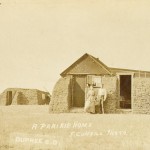
Prairie Home in Dupree, SD, courtesy Special Collections and University Archives, Wichita State University
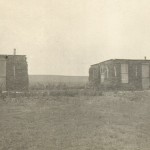
Early Homes for Settlers in SD, courtesy Special Collections and University Archives, Wichita State University
______________________________________________________________________________________
Extremes in America
Just like today, the U.S. population experienced extremes of wealth and living standards in the late 1800s. The 175,000 square foot Biltmore Estate, still the largest privately-owned home in America, was built between 1888 and 1895. George Vanderbilt equipped his new home with modern innovations like running water in the bathrooms, electricity (it was wired for both A/C and D/C because standards hadn’t been decided on), and refrigeration for the kitchen. The home had 250 rooms, of which 35 were bedrooms and 43 bathrooms. In its heyday, there were 30-35 servants to wait on the family and guests.
Built toward the end of the Gilded Age (late 1860s until nearly 1900), Biltmore represented the kind of lifestyle available to wealthy families during an era without income taxes or much industrial regulation. (A permanent income tax became law in 1913.) Men like Andrew Carnegie J. P. Morgan, and John D. Rockefeller amassed dazzling fortunes in often ruthless ways; Rockefeller was the first American to amass $1 billion in personal wealth. In contrast, most families in America earned less than $1,200 annually, and many well below $500. The president of the United States earned $50,000 per year.
______________________________________________________________________________________
No Exemption From Danger
Though attendants and nurses bore the brunt of patient violence (see last post), no one on staff at an insane asylum was truly immune. On March 16, 1882, the superintendent of Utica Insane Asylum, John P. Gray, sat in his office with two staff members and his son. Henry Remshaw, who had made threats against the doctor several weeks before the shooting, walked in and shot Gray through the upper jaw. Continue reading
Doctors and Nurses
Doctors at insane asylums were recognized authorities in their fields, and most believed they should have total control of their institutions. They expected the utmost deference from staff, including their nurses. Dr. Harry Hummer had many problems with his staff, not only because of his egocentric personality, but also because of his own background and training. He had come from a large institution whose staff interaction was patterned after the etiquette and tradition of the military; he also had servants and “colored” help to whom he could speak as he wished. When he got to the more independent-minded West, his staff resented his high-handedness and bad temper. Some were terrified of Hummer, but others actively spoke against him.
When discontent at the Canton Asylum for Insane Indians prompted a thorough inspection, supervisor Charles L. Davis discussed the reasons behind some of Hummer’s problems. “He is fully imbued, as are many others who have never been east [Davis’ error] of the Allegeheny [sic] mountains, that the people of the central west are an uncouth,- ill-mannered and ignorant class.” With this attitude at the ready, Hummer could not help but rub his staff the wrong way.
Davis continued, “He has also evidently been accustomed to speaking to the help about his home and possibly in the hospital where he has served in the manner of master to servant, and has maintained a similar matter of address toward his employees.”
Not much in Hummer’s background and personality boded well for harmony within the Canton Asylum for Insane Indians.
______________________________________________________________________________________
Nurse Training
The Women’s Hospital of Philadelphia, established in 1861, began a training program for nurses in 1863. It is probably the first in the country to have offered any kind of formal training in the profession. The New England Hospital for Women and Children in Boston was founded in 1862, and established a school for nurses in 1872; this school is generally considered the first nursing school in the country. Linda Richards (1841-1930) was one of the first students to enroll in the New England Hospital’s school, and became the country’s first formally trained nurse when she graduated in 1873 from its year-long program. Also in 1873, three more nursing schools were established: the Bellevue Hospital Training School in New York; the Connecticut Training School in New Haven; and the Boston Training School in Massachusetts General Hospital.
Even after female nurses were accepted by the medical establishment, they were often seen as workhorses more than professionals. Student nurses learned their profession at hospitals rather than universities and for the most part, represented cheap labor to these institutions; during their training, they swept, mopped, dusted, washed dishes, and performed many other menial tasks. Even when they moved on to more clearly medical duties, they still had little scope for independence. They might sterilize equipment, make up boxes of bandages, sharpen needles, and dress bandages, but all of this work was done under close supervision. Doctors expected complete deference to their decisions and authority.
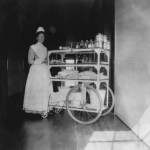
Bessie Simpson With Supply Cart at the New England Hospital for Women and Children, courtesy Jamaica Plain Historical Society
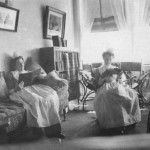
Nursing Students at the New England Hospital for Women and Children, courtesy Jamaica Plain Historical Society
______________________________________________________________________________________
Gender Issues
Like blacks (see last post), women found it hard to enter the medical profession; in the U.S., women were kept out of hospitals almost entirely until the strain of caring for the wounded during the Civil War showed how valuable they were. Though a sprinkling of female doctors gained attention during the mid to late 1800s, most females in medicine were nurses. However, most did not consider work in mental institutions, where patients could be violent and destructive. Asylum nurses were usually men during much of the 1800s, though married couples sometimes worked together in wards. When female nurses did begin to work at large institutions, they did as much grunt work as compassionate care. Nurses were often expected to sweep and mop their wards, and perform many other housekeeping tasks. It is little wonder that they wanted and accepted help from patients. They had little time off, and were expected to follow doctor’s orders without argument.
By the turn of the century, alienists began to rethink their position on the use of female nurses in asylums. An article by Dr. Charles R. Bancroft (medical superintendent at New Hampshire State Hospital) in the October, 1906 issue of the American Journal of Insanity discussed how to use female nurses effectively. The author believed that it would be best to follow the example of regular hospitals, which gave head nurses both responsibility and authority. “There must of necessity be men attendants, but their position should be that of the general hospital orderly whose duty it will be to execute the orders of the head nurse,” said Bancroft. The doctor displayed both chauvinism and insight when he stated: “Woman are naturally better housekeepers than men,” and later, “. . . they are better nurses than men, but their qualifications never show for what they are worth unless the women are in the superior position.”
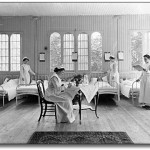
Infirmary Nurses in a Toronto Insane Asylum, circa 1910, courtesy Queen Street Mental Health Centre, Archives of Ontario
______________________________________________________________________________________
Segregated Medicine
Though white doctors sometimes had a poor education and few skills, they did not face the discrimination that African-Americans trying to enter the medical field did. In the U.S., black medical students generally went to missionary schools or proprietary schools (owned by doctors who were paid through student fees), or to schools in Canada. Even the few northern schools in the U.S. that would accept black students typically treated them shabbily. Black physicians did not have admitting privileges to hospitals, and because of this, many black patients preferred white doctors.
Many black medical students attended Howard University College of Medicine in Washington, D.C., established in 1868. It was named for Major General Oliver O. Howard, a Civil War officer who was helped found the university and who was the commissioner of the Freedmen’s Bureau. (Howard University received much of its financial backing from this agency.) Whites controlled most aspects of the university; it did not have a black president (Dr. Mordecai Wyatt Johnson) until 1926. However, Dr. Alexander Thomas Augusta, a free-born African-American from Virginia who attended Trinity Medical College in Toronto, was among the university’s founding staff. He was the first African-American to serve on a medical school faculty in the U.S.
Dr. Daniel Hale Williams (1856-1931) founded Provident Hospital and Training School for Nurses (Chicago) in 1891; it was the first black owned and operated hospital in the United States. He also founded the National Medical Association in 1895, after black doctors were excluded from the older American Medical Association. This organization was originally known as the National Negro Medical Association.
______________________________________________________________________________________
Medical News
Medical ads in the early 1900s were imaginative, and sometimes a bit deceptive. Many were disguised as news articles that led readers to think they were getting a legitimate story, only to discover that a medical “cure” was at the heart of the piece. Continue reading
